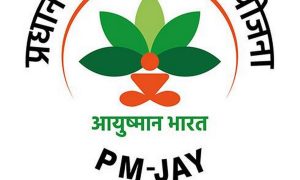Schemes under NPS: There will be six levels of risk — Low Risk, Low to Moderate Risk, Moderate Risk, Moderately High Risk, High Risk, and Very High Risk
National Pension System: By the mid of this month, it will become mandatory for fund managers to assign ratings to schemes under the NPS to indicate the level of risk involved. There will be six levels of risk — Low Risk, Low to Moderate Risk, Moderate Risk, Moderately High Risk, High Risk, and Very High Risk. The new rules will become effective from July 15.
“Schemes of the National Pension System (NPS) are becoming an important asset for investment for long-term saving of the individuals and help in creating a desired corpus for pension, if invested in an informed manner. The investment under various asset classes of the Schemes of Pension Funds would involve different level of risks for subscribers and, therefore, it is desired that the adequate disclosure of the risks involved in various schemes of NPS are made available for awareness of the subscribers,” the PFRDA has said in a circular.
Read More: Have you invested in mutual funds? Here’s how your SIPs will be affected from July 1
It added that the risk profiling has to be disclosed on the website of repective pension funds under the ‘portfolio disclosure’ section within 15 days from the close of each quarter ending month. It also said the pension funds will disclose the risk level of schemes on their website as on March 31 of every year, along with the number of times the risk level has changed over the year.
“Risk profiling shall be evaluated on a quarterly basis and any change in risk profile shall have to be updated on the website of pension funds and to be communicated by respective pension fund to NPS Trust for updating it on website of NPS Trust,” according to the circular.
What Are The Schemes Under NPS?
Under the National Pension System, there are four asset classes — equity (E), corporate debt (C), government bonds (G) and alternative investment (scheme A). Schemes under each of the classes has two tiers. In the NPS, there are multiple pension fund managers and investment options. The subscriber first selects the fund manager, and then he/she has an option to select any one of the investment options.
Tier 1 and Tier 2 Under NPS
The National Pension System has two types of accounts — Tier 1 and Tier 2. Tier 1 account is mainly meant for retirement savings where one has to make a minimum contribution of Rs 500 while opening the account. It also entails tax benefits under Section 80CCD (1B) of the Income Tax Act, 1961.
NPS Tier 2 is an open-access account with a minimum investment of Rs 1,000, where the subscriber is free to withdraw his/ her entire corpus at any point in time. No tax benefits are available in this account.
Read More: Professional Loan for CAs, Doctors: Here’s everything you need to know
What Will Be The Rating System?
The new rules have outlined six levels of risk — Low Risk, Low to Moderate Risk, Moderate Risk, Moderately High Risk, High Risk, and Very High Risk. Based on the scheme characteristics, pension funds shall assign risk levels for the Schemes E-Tier 1, E-Tier 2, C-Tier 1, C-Tier -2, G-Tier-1, G- Tier-2 and Scheme A, according to the circular.
By knowing the risk profile of the schemes/ asset class, the subscribers will have a better idea of the risk involved in his investments under the NPS. He will be able to take an informed decision on allocation to various asset classes schemes at the time of enrolment into the scheme and at the time of making subsequent contributions to the schemes.





































